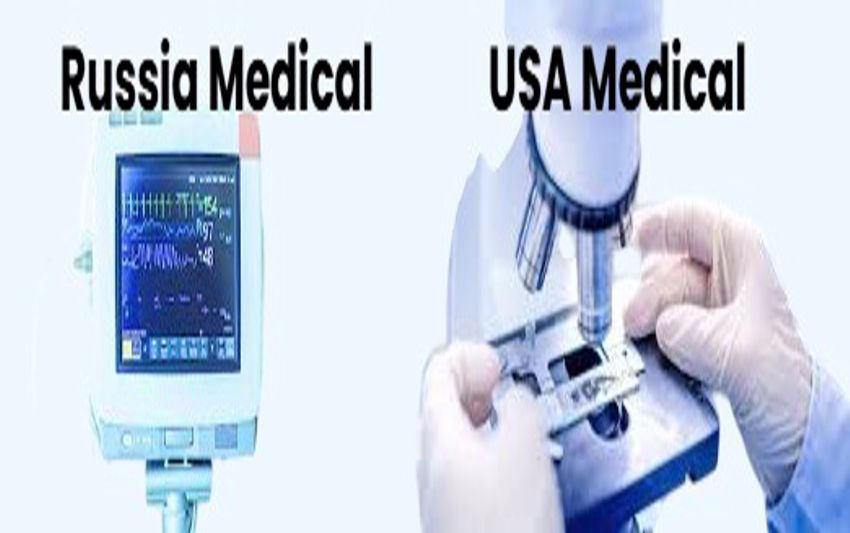The medical technology (MedTech) industries in Russia and the USA are among the most advanced in the world, yet they differ significantly in terms of innovation, accessibility, and global influence. While the USA leads in cutting-edge medical research, high-tech equipment, and pharmaceutical dominance, Russia has made notable strides in specialized fields such as nuclear medicine, vaccine development, and cost-effective solutions. This article provides a detailed comparison of Russia medical technology vs USA medical technology, highlighting key strengths, weaknesses, and future trends.
1. Research and Innovation
USA: Global Leader in Medical Innovation
The United States is the undisputed leader in medical research and technological advancements. With top-tier institutions like the National Institutes of Health (NIH) and private sector giants such as Johnson & Johnson, Medtronic, and Pfizer, the USA dominates in:
Medical Devices: Advanced imaging systems (MRI, CT scans), robotic surgery (da Vinci Surgical System), and AI-driven diagnostics.
Pharmaceuticals: Development of breakthrough drugs, mRNA vaccines (Pfizer-BioNTech COVID-19 vaccine), and gene therapies.
Biotechnology: CRISPR gene editing, personalized medicine, and regenerative therapies.
The U.S. invests heavily in R&D, with over $200 billion spent annually on healthcare research, fostering rapid innovation.
Russia: Niche Expertise and Cost-Effective Solutions
Russia’s medical technology sector is smaller but excels in specific areas:
Nuclear medicine is at the forefront of radiation therapy and radiopharmaceuticals for the treatment of cancer.
Vaccine Development: Historic expertise in virology (Sputnik V COVID-19 vaccine).
Military and Space Medicine: Advanced trauma care and telemedicine for astronauts (used in collaborations with NASA and Roscosmos).
However, Russia faces challenges in funding and commercialization, with fewer globally recognized MedTech companies compared to the USA.
2. Healthcare Accessibility and Affordability
USA: High Cost, Unequal Access
The U.S. healthcare system is technologically advanced but suffers from:
High Costs: Expensive medical procedures and insurance premiums.
Access Disparities: Rural areas often lack cutting-edge facilities compared to urban centers.
Despite these issues, the U.S. continues to be a popular location for medical tourism, especially for intricate procedures and cutting-edge therapies.
Russia: Universal but Underfunded System
Russia provides free healthcare under its state system, but infrastructure varies:
Urban vs. Rural Divide: Major cities like Moscow have modern hospitals, while rural areas rely on outdated equipment.
Affordable Medical Devices: Russia produces cost-effective alternatives to Western tech, making healthcare more accessible but sometimes less advanced.
3. Government Support and Regulations
USA: Private Sector-Driven with Strong FDA Oversight
The Food and Drug Administration (FDA) ensures rigorous testing and safety standards.
– Venture capital and private investments fuel startups and biotech firms.
Russia: State-Led Initiatives with Slower Approvals
– The government controls major healthcare projects, such as the Health Care National Project, aiming to modernize facilities.
– Regulatory processes are slower than in the U.S., delaying new tech adoption.
4. Future Trends and Global Influence
USA Continues to Lead in AI and Precision Medicine
Expansion of telemedicine, wearable health tech, and AI diagnostics (e.g., IBM Watson Health).
Strong pharmaceutical exports and clinical trial leadership.
Russia Focuses on Strategic Independence
increasing domestic manufacturing of medical equipment in order to lessen dependency on imports.
Growth in biotechnology partnerships with China and India.
Conclusion
The comparison of Russia medical technology vs USA medical technology shows that while the USA leads in innovation, funding, and global influence, Russia excels in cost-effective solutions, nuclear medicine, and vaccine development. Both nations face challenge high costs in the U.S. and underfunding in Russia but continued advancements suggest a competitive future in global healthcare.
For patients and investors, understanding these differences is crucial in navigating the evolving MedTech landscape.

